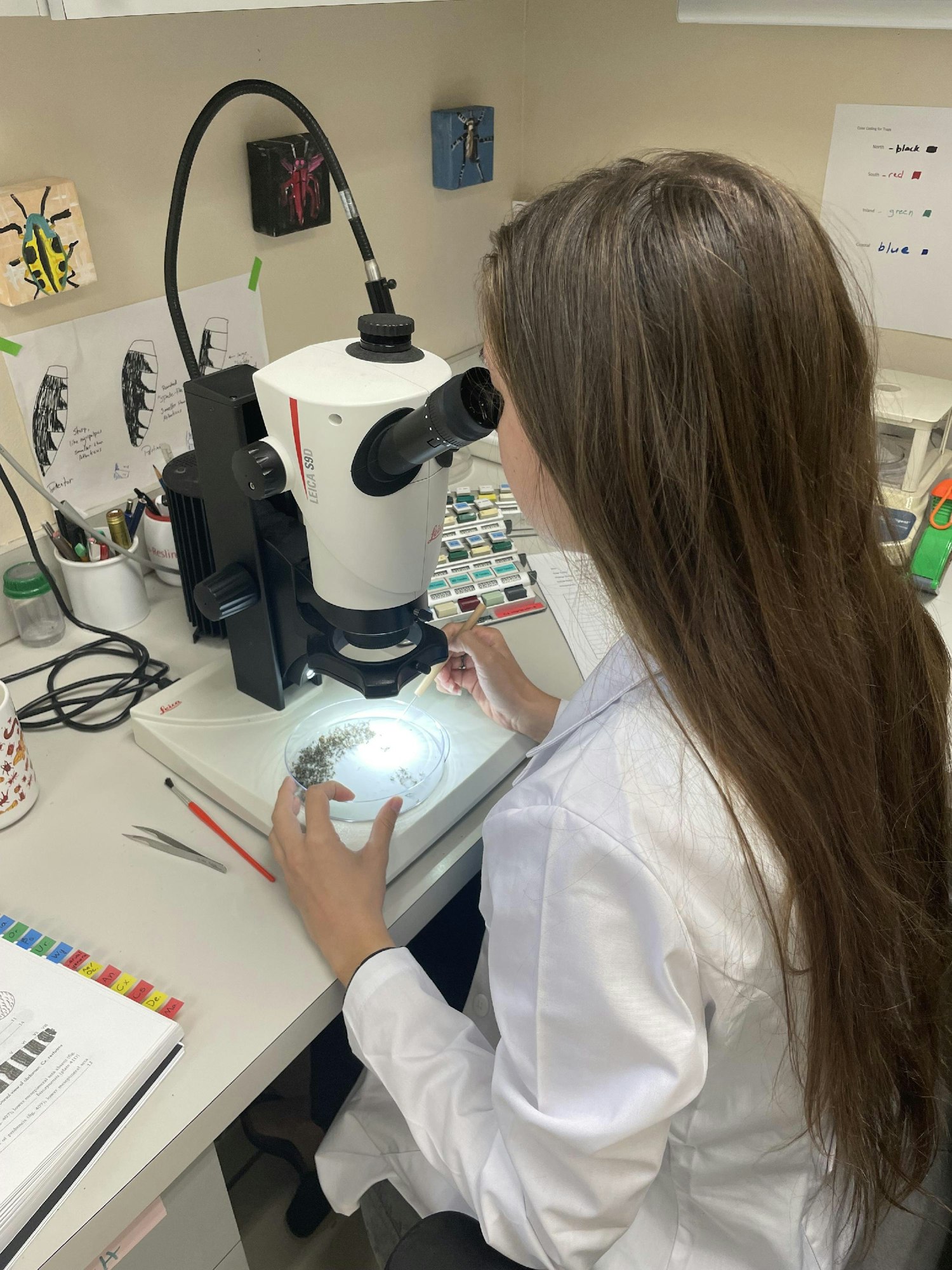Science Program
Science
The District Science Department is committed to conducting continual research to assess the efficiency of control measures, mosquito population dynamics, novel trapping and control methods, and understanding non-target effects.
Surveillance
The Science Department deploys a variety of traps in the field that assist in the surveillance of population numbers for control measures and to assess disease threat in the county. For more information see the Adult Surveillance page.
Arbovirus
The Science Department has an expanding arbovirus department that uses sentinel chickens for viral detection using in-house testing and the state laboratory. In addition, other trapping techniques are used to evaluate vector species population dynamics. See the Sentinel Program and Arbovirus pages for more information.
Research

Resistance Testing
The Science Department is dedicated in analyzing the effectiveness of adulticides and larvicides in controlling important vector and nuisance species. Adulticide testing is completed in multiple forms; CDC bottle bioassays, topical assays, and ultra-low volume (ULV) truck trial testing. CDC bottle bioassays are the most common form of testing that differentiates if a species is evolving resistance or tolerance to adulticide active ingredients. Topical assays use a syringe applicator to put a single drop of a adulticide on each mosquito to uncover the specific concentrations that kills 50% of a population. ULV truck trials are used to test the formulations deployed by truck used in control missions. Larval testing uses a range of larvicide concentrations to evaluate the strength needed to control different species.
Enzyme Testing
Enzyme assays are critical diagnostics tools used to assess the metabolic mechanism of insecticide resistance in mosquito populations. These biochemical tests quantify the activity of detoxification enzymes, primarily esterase, cytochrome P450 monooxygenase, and glutathione S-transferase that can degrade or sequester insecticides before they reach their target sites. Elevated enzyme activity is one of the key indicators of resistance development, particularly to organophosphates, pyrethroids, and carbamates. We performed enzyme assay on our field collected adult female of Culex quinquefasciatus populations including our laboratory susceptible reference colony. Individual mosquitoes are homogenized, and their enzyme levels are quantified using colorimetric assay with specific substrates and microplate readers. The data generated help us determine the resistance profile or status of local field mosquito population at specific location and time points.
Operationally, enzyme assay results inform decisions regarding insecticide rotation, product selection, and application timing. By integrating enzyme assay data with insecticide resistance surveillance tools such as with CDC bottle bioassay and topical application assay, we can adapt our control strategies proactively, reduce the risk of control failure, and preserve the efficacy of insecticide products. This ultimately enhances the effectiveness and sustainability of our Integrated Mosquito Management (IMM) program.
RadSource Sterile Male Aedes aegypti Releases
Indian River Mosquito Control District will be completing an exciting experiment evaluating the effectiveness in releasing sterile Aedes aegypti males to control populations in a small area. RadSource is a company that irradiates male mosquitoes rendering them sterile. The male mosquitoes mate with wild females in nature, preventing them from producing viable eggs. Between May and July, releases will occur at a scrap yard in Vero Beach. The success of this control method would provide an option that is more environmentally friendly.
Non-target Studies
This year the Science Department is expanding to evaluate non-target species and the effects of our control methods. This year the species being focused on is the White Peacock butterfly or Anartia jatrophae. The goal is to understand how adulticide residues applied to host plants with ultra-low volume or fogging techniques affect caterpillar feeding behavior and survivability. Additionally, if enough adults are produced ULV applications will be used to measure mortality.
Novel traps
New traps are being developed by the Science Department to trap adult mosquitoes in areas that have not been previously investigated and to attract new species to lay eggs for lab rearing and further experimentation.

The new trap is known as a gravid trap. These traps sit on a black tray that is filled with stinky water that attracts egg-laying females in the area. Gravid traps will be placed at four of our sentinel chicken sites enhancing vector species surveillance in the county. Comprehensive resistance testing with three insecticide active ingredients using bottle bioassays will be conducted with Culex quinquefasciatus populations to evaluate the efficacy of the products to refine control practices.
If you have any questions about any research projects please contact Kyle Kosinski at the Indian River Mosquito Control District at (772) 562-2393 or k.kosinski@irmcd.org
